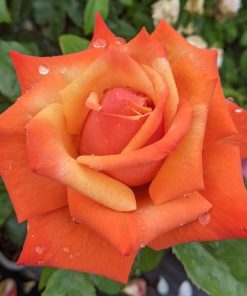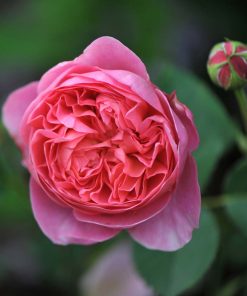Description
The climbing sport of the popular Floribunda rose ‘Iceberg’ shares many of its characteristics. It bears clusters of pure white, semi-double flowers on long stems in early summer, and will continue to bloom throughout the season with regular deadheading. The glossy, dark green foliage forms a dense backdrop for the blooms, which have a mild fragrance. This vigorous climber can reach up to 4.5m in height and is perfect for training up walls, fences, or pergolas. The climbing ‘Iceberg’ is a hardy and disease-resistant rose, making it an excellent choice for any garden.

















